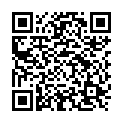|
|
|
| Module code: UI-PH1 |
|
|
4V+1U (5 hours per week) |
|
5 |
| Semester: 1 |
| Mandatory course: yes |
Language of instruction:
German |
Assessment:
Written exam, 120 min.
[updated 04.03.2024]
|
E2102 (P211-0117) Electrical Engineering and Information Technology, Bachelor, ASPO 01.10.2018
, semester 1, mandatory course, technical
UI-PH1 (P211-0117, P251-0033) Environmental Technologies, Bachelor, ASPO 01.10.2021
, semester 1, mandatory course
UI-PH1 (P211-0117, P251-0033) Environmental Technologies, Bachelor, ASPO 01.10.2023
, semester 1, mandatory course
|
75 class hours (= 56.25 clock hours) over a 15-week period.
The total student study time is 150 hours (equivalent to 5 ECTS credits).
There are therefore 93.75 hours available for class preparation and follow-up work and exam preparation.
|
Recommended prerequisites (modules):
None.
|
Recommended as prerequisite for:
UI-T-KTE Concepts of Thermal Energy Systems
UI-T-TWF Introduction to Thermodynamics, Heat Transfer and Fluid Technology
[updated 20.03.2024]
|
Module coordinator:
Prof. Dr.-Ing. Barbara Hippauf |
Lecturer:
Prof. Dr.-Ing. Barbara Hippauf
[updated 28.03.2024]
|
Learning outcomes:
After successfully completing this module, students will: be familiar with kinematic quantities and their interrelationships. They will be able to set up equations of motion for different movements, with respect to different reference systems and determine solutions. Students will have learned to break down complex movements into partial movements by applying superposition.
- They will understand force and momentum as physical quantities and use these quantities to determine the cause, state and effect of a movement. They will be familiar with models that describe friction between bodies and of bodies in liquids and gases and be able to apply them.
- Students will be familiar with torque and angular momentum and be able to use these for the dynamics of rotary motion. They will be familiar with the analogies and differences between translation and rotation and be able to reproduce them. They will understand how the principles of the center of mass can be transferred to rigid bodies.
- Students will have mastered the definitions of work, power and energy and know the different units for these quantities. They will be familiar with the concept of conservative force and how it is used in the definition of potential energy.
- Students will be able to explain gravitational force as an elementary interaction and draw conclusions from its properties, such as Kepler´s laws.
- Students will understand the methods of conservation of momentum, conservation of angular momentum and conservation of energy and be able to apply them to examples such as multidimensional impact.
- Students will be familiar with the causes of gravitational pressure and buoyancy in liquids and gases and be able to explain their consequences. They will know what types of flows can be categorized and how they are recorded. They will be able to describe and determine flows without turbulence using equations.
- Students will be familiar with temperature and heat quantity as fundamental variables. They will be able to explain the principles and consequences of the kinetic theory of gases. They will be able to explain the main laws of thermodynamics and know and explain their applications.
- Students will have gained insights into and know where physical laws and methods are applied in everyday life, in technology and especially in the field of sensors.
[updated 04.03.2024]
|
Module content:
Kinematics
Definition of the kinematic variables for linear motion,
linear uniform motion, linear uniformly accelerated motion, free fall,
non-rectilinear motion, especially circular motion, oblique throwing, oscillations
Dynamics of a mass point
Force and momentum, conservation of momentum, especially elastic and inelastic collisions, Newtonian laws,
Friction,
Dynamics in curvilinear motion, especially circular motion, torque and angular momentum, angular momentum,
Work, power, potential and kinetic energy, energy conservation with conservative force,
Gravitational force
Dynamics of rigid bodies
Center of gravity and moment of inertia in rigid bodies, rotation equations,
Physical pendulum, torsion pendulum,
Rotational energy, gyroscope
Mechanics of liquids and gases
Gravitational pressure and buoyancy in liquids,
Archimedes´ law and Boyle Marriott´s law,
Gravitational pressure and buoyancy in gases, especially in the atmosphere,
laminar flow, in particular continuity and Bernoulli´s equation, Hagen Poisuellle´s law
turbulent flow, Reynolds number
Thermodynamics
The concept of temperature, measuring temperature, heat capacity,
Phase transformations, kinetic gas theory, equation of state of the ideal gas, van der Waals equation, changes of state,
Main laws of thermodynamics, entropy, cyclic processes, heat-power machines, heat conduction, radiation laws
[updated 04.03.2024]
|
Teaching methods/Media:
Blackboard, lecture notes, presentation
[updated 04.03.2024]
|
Recommended or required reading:
Hering, Ekbert; Martin, Rolf; Stohrer, Martin: Physik für Ingenieure, Springer Vieweg, (akt. Aufl.)
Hering, Ekbert; Martin, Rolf; Stohrer, Martin: Taschenbuch der Mathematik und Physik, Springer Vieweg
Turtur, Claus Wilhelm: Prüfungstrainer Physik, Springer Spektrum
[updated 04.03.2024]
|

